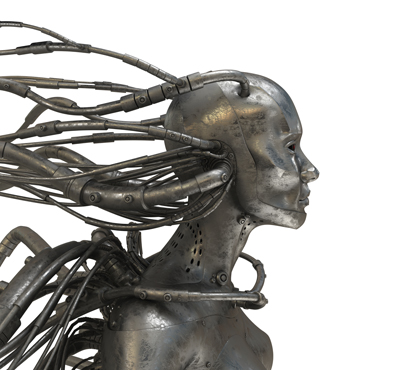
|
I have managed to overcome two major addictions in my life: the first to smoking, the second to drinking. Aside from eating, breathing, and writing, the only other addiction I’m aware of is to coffee. And I love the bean so much—chocolate, too, come to think of it—that it will have to be proven deadly on the same scale as cyanide before I will consider quitting.
My smoking started in college, freshman year. My parents had always smoked cigarettes, a pack a day and more each. And they were very smart people: when at about the ages of seven and six my brother and I noticed their habit and inquired when we could begin smoking, my mother agreed that we could have one cigarette apiece each year. And she stuck to her word. She took us into the bathroom and made us smoke an entire unfiltered Camel down to the butt, with us going green and gasping all the way. That should have made devout non-smokers of her sons for life.1
This was all before the Surgeon General’s 1964 report, of course. The upward trend in tobacco use tapered off after that. But I came to my freshman year in 1966, just two years after that landmark warning. And after those sick-making bathroom scenes, I never would have started smoking cigarettes, anyway. But I was now at the university, an English major, attracted to the tweedy, scholastic life, and an admirer of Oxford don C. S. Lewis. So I tried pipe smoking and, after the body’s initial revulsion—those first few puffs are always sour and nauseating—liked the effect.
Tobacco is soothing, a relaxing almost-high without the sensory or mental distortion of other drugs. It was the English major’s perfect accompaniment for hours of sitting in my dorm room reading assigned literature. At first, like most pipe smokers, I didn’t inhale. But, of course, smoke gets into your lungs anyway, because you are sitting in a cloud of it. After a year or two I was inhaling as much as any cigarette smoker—plus getting an occasional sip of utterly disgusting condensate from the pipe stem. But I was hooked and smoked an ounce or more of Douwe Egbert’s Amphora Mild Cavendish tobacco each day, about the equivalent of a pack and a half of cigarettes.
Amphora was an unflavored blend, unlike some tobaccos that were more popular with the college crowd at the time and loaded with perfumes. I occasionally liked a cigar, too. When I went home for Christmas and summer vacation, my parents tolerated the pipe smoke because they were still using cigarettes, but they banned cigars in the house. And, truth to tell, I only smoked them there as a minor form of rebellion, because of this negative reaction.
I smoked for eight years—four in college, four in my early working years, when it was still acceptable to smoke at your desk and most co-workers didn’t object. But I could sense that something was wrong. If it wasn’t the pinhole burns in my shirts from the occasional fall of hot ash, the stains on my fingers from cleaning that awful residue out of the pipe,2 and the nasty brown stains on my teeth and rimming my nostrils, it was an all-over-sick feeling I would get after a day of heavy smoking.
I tried quitting and could do so for a week or two at a time. But then something stressful would happen, and I would reach for the pipe and its soothing effects. I always promised myself I would cut down, but within a day or two I was smoking my daily ounce and a half of Amphora.
When you’re in college you tend to neglect things like regular doctor and dentist checkups. After joining the working world, I had to start taking better care of myself and soon found a local dentist. He went after the layer of tar built up on the inner surfaces of my teeth—about as thick as a good asphalt road—with scrapers and drills, grunting and muttering curses all the while. Him: “Did that hurt?” Me: “Well, come to mention it …” Him: “Good.” But after years of buildup, I walked out of his office with suddenly clean teeth. I thought I would have another four to six years of happy smoking before I got another workout like that. But the next visit was the same ordeal, because the tobacco tar is sticky and binds well with enamel.
After that, I decided that I would surprise my dentist by quitting for good and keeping these newly clean teeth bright and sparkly at my next visit. This was in the days before nicotine gum and patches, smoking cessation clinics, and other psychological and medical help. To quit, you had to go cold turkey. Luckily—and I say this advisedly—I had just taken up a new job as technical editor at an engineering and construction company. My task was to edit the writing of project engineers for grammar, spelling, and consistency and then oversee document production through typing, proofing, printing, binding, and delivery. We were slamming out one or two major projects per editor per week, with documents that represented millions of dollars in engineering proposals and technical reports and that had to be delivered on time, to the day and hour, halfway across the world, or else they became so much wastepaper. The job was so stressful that my resolve to quit smoking was tested again and again. And yet I managed to stay off the pipe.3
When I went back to my dentist six months later, my teeth were still clean—well, except for coffee stains, but he didn’t complain about them, because they were brittle and easier to clean. I’ve managed never to take up the habit again, although for about fifteen years after quitting, I would have what I call “smoking dreams.” In the dream, no matter what else was happening, I had gone back to smoking and regretted it. I would not know I was really awake until I could self-check and remember that, yes, I did quit and, no, I haven’t started again. The nicotine addiction takes that much of a hold on your subconscious mind.
My drinking also started in college, although later, when I turned twenty-one and it was legal for me to go into a bar and order a beer. Unlike many of my classmates, it never occurred to me to get a fake driver’s license and try to drink before the legal age, and I was never in the fraternity crowd, where the keg was open to the whole house. Since my parents were also regular drinkers, taking one or two dry martinis—very dry, with zero-percent vermouth content—each evening, I knew about alcohol. As a child, my father would let me eat the gin-soaked lemon peel or pimento-stuffed olive out of his martini. And as a later teen, I had made a few forays into their cupboard to try the sweeter liqueurs. But I wasn’t then a regular drinker.
In college as a junior and senior I would go to the bars on Saturday nights with my friends and drink beer. After college, I kept up with the beer but also tried gin and vodka, and after a couple of years I settled on red wine as my favorite tipple. I would drink beer only with the foods that didn’t go well with wine. My consumption stabilized at about a bottle of red wine a night, and part of this was habit and part economy. An opened bottle really wasn’t viable and wouldn’t keep for more than about twenty-four hours in the refrigerator. So it just became easier to drink it all. But some weeks at work were harder than others, and by Thursday night I might be drinking half of a jug of “tank car red” and feeling the effects the next morning. Occasionally, as a special treat, I might down most of a bottle of Irish whiskey and then fight the next day to maintain my equilibrium.4
But I never graduated to drinking in the morning to “cure” the hangover. And I generally did not drink at lunchtime. I waited until I got home in the evening and had nothing more planned before I started drinking … unless I had a couple of glasses of wine or beer when we went out for dinner. Still, aside from the mammoth effort it took—pure cussedness and sheer will power—for me to get up and function the next morning, I was starting to get that generally sick feeling. My body knew I was again overindulging in something that was not good for me.
And again, it was medical service that cued my change of heart. I had just signed up with a new doctor, and part of his medical questionnaire for new patients asked how many drinks—with one shot of liquor, one five-ounce glass of wine, or a twelve-ounce beer equal to one drink—did I take per week. That was crafty, because it made me count up my consumption in a different way. I came out with twenty-eight drinks a week. His first question during the physical exam was, “How long have you had this drinking problem?” I started to say, “I don’t consider it a problem”—and realized that is what every alcoholic says.
Yes, as before with the smoking, I had made efforts to cut down or quit. But cutting down never really happened, due to that sense of frugality about wasted wine. And although I could quit for a few days at a time, something always happened to make me start again. I once went all of six months without drinking, during which I finished my first publishable novel and sent it to an agent. But on the night she told me she had sold it, I celebrated with a glass or two of red wine. Within a week I was back to drinking a bottle a night.
Once again, I walked out of the new doctor’s office with a vow that I would show him by never drinking again. And luckily, at my corporate communicator’s job, I had just taken on a massive project, to consolidate the company’s weekly employee newsletter with its monthly magazine for both employees and retirees, and negotiate all the changes to scheduling and officer reviews in the process. I managed to finish that project without coming home at night and sliding into a bottle of red wine. And I have been sober for the past thirty-four years.5
What have these two experiences of quitting—finally, for good, quitting and not just cutting down—these two addictions taught me that I can pass along?
First, the mind is a monkey. And second, the body wants its candy.
During the early months when I was consciously not drinking, I found my subconscious mind—the voice that speaks out of the darkness—suggesting thinks like, “It’s been a hard day, you’ll feel better with a drink.” Or, “You did really good work today, you deserve a drink.” And finally, “You’ve gone a whole week without drinking, why don’t you take a drink to celebrate?” If you pay attention to the ideas that pop into your head and track them back into your subconscious, as I was trained to do as a writer, you can start linking these thoughts together. After a while, the absurdity got to me. Whatever the situation, however I felt, the formulation was the same: you need to drink. Ah ha! The body wants its candy—the drink, the smoke—and the mind is the willing, deceitful manipulator that will try to trick you into taking that first sip or puff.
So I adopted a simple rule, simple but iron clad and unbreakable: “Don’t put it in your mouth. If you find it in your mouth, spit it out.” I took up drinking diet soda instead of beer or wine at night, and now I drink flavored mineral water for health reasons. But some things just go better with beer and wine, so I would allow myself a “non-alcoholic” beer or wine (no more than 0.5% alcohol content) on those special occasions. I drank sparkling apple cider when available—and once at a party, when I picked up a glass of champagne and took a sip before smelling it, I did spit it out, put the glass down, and went back for the cider. I also agonized about foods, especially desserts, that might have uncooked alcohol in them, but I soon reasoned that the amounts were small—about that 0.5%—and this was technically “eating” and not “drinking.”
In each case, I quit on the cold-turkey method: simply stopping and making a rule for myself not to start again. Not everyone can do this. And I have no problem with people who need Alcoholics Anonymous and related organizations, with their Twelve Steps and Twelve Traditions and their wonderful community of peer support. But that regimen—especially the relinquishing of self before God, even when masked as a “Higher Power”—was not for me. My higher power was my mother’s voice, echoing in my head, when I imagined her regarding her drunken, tobacco-besotted son and saying, “You’re better than that!”
But the thing you learn in life is that everything is messy, and sometimes you just have to go with whatever works.
1. This was before my brother developed asthma, and being trapped in the car with two smoking parents was torture for him. So he never took up the practice.
2. I soon favored a pipe made of ceramic and compressed carbon, which did not build up a layer of char in the bowl. It was easily cleaned with rubbing alcohol.
3. It was a good thing I quit smoking, too, because soon afterward I met the woman who would become my wife. She was a dedicated non-smoker who told me, “Kissing a smoker is like licking a dirty ashtray.” Point taken.
4. A college roommate had advised me to always, before going to bed, drink a big glass of water with two aspirin and two high-dose vitamin C tablets. This regimen generally kept me viable the next morning.
5. Interestingly, I never had “drinking dreams” after quitting. That may tell you something about the relative strength of these two addictions.


